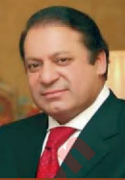
Nawaz Sharifs Second Grovement
Nawaz Sharif’s second term as Prime Minister of Pakistan, from 1997 to 1999, was marked by a mix of economic achievements, political controversies, and international crises. This article delves into the key events, challenges, and controversies that defined Nawaz Sharif’s second regime in Pakistan.
Return to Power
Nawaz Sharif’s return to the Prime Minister’s office in 1997 came after a hiatus of seven years. His party, the Pakistan Muslim League (PML-N), secured a significant victory in the general elections held in February 1997. Sharif’s second term was characterized by high expectations and the promise of continued economic progress.
Economic Growth and Infrastructure Development
One of the notable achievements of Nawaz Sharif’s second government was its focus on economic growth and infrastructure development. Under his leadership, Pakistan achieved impressive economic growth rates, attracted foreign investment, and embarked on ambitious infrastructure projects.
The construction of the Lahore-Islamabad Motorway (M2) and the development of other road networks were key infrastructure milestones during this period. These initiatives aimed to improve connectivity within Pakistan, promote trade, and create jobs.
Nuclear Tests and National Security
In May 1998, Pakistan conducted a series of nuclear tests in response to similar tests by India. These tests made Pakistan a nuclear-armed nation, dramatically altering the strategic balance in South Asia. Nawaz Sharif’s government faced both international condemnation and domestic acclaim for this bold move.
The Kargil Conflict
One of the most significant challenges of Nawaz Sharif’s second term was the Kargil conflict with India in 1999. The conflict, which took place in the Kargil district of Indian-administered Kashmir, brought the two nuclear-armed neighbors to the brink of war. Sharif’s government faced criticism for not being fully aware of or in control of the military operation in Kargil, leading to a severe crisis.
Political Turmoil and Ousting of the Government
As the Kargil crisis unfolded, Nawaz Sharif’s government faced growing political turmoil. Disagreements between the civilian leadership and the military intensified, and Sharif’s efforts to secure a ceasefire in Kargil were met with resistance. In a dramatic turn of events, he ordered the withdrawal of Pakistani troops from Kargil under international pressure.
These actions, along with growing political and military tensions, led to a constitutional crisis. In October 1999, Nawaz Sharif’s government was dismissed by the military, and he was subsequently arrested on charges of hijacking and terrorism.
Conclusion
Nawaz Sharif’s second government from 1997 to 1999 was marked by a mix of economic growth, significant infrastructure development, and major national security events, including Pakistan’s nuclear tests and the Kargil conflict. However, it was also marred by political controversies and the ultimate ousting of the government by the military.
The events of this period continue to shape Pakistan’s political landscape and its relations with neighboring India. Nawaz Sharif’s legacy remains a subject of debate in Pakistan, with his supporters highlighting his economic achievements and critics pointing to his handling of the Kargil crisis and the subsequent coup. This era underscores the complexities of governance and decision-making in Pakistan’s political environment.

